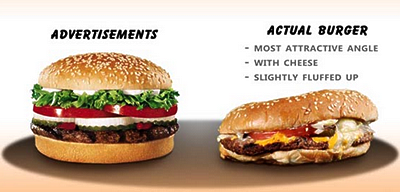Competitive advertising is an entertaining persuasion tactic, telling you why you should choose one brand over another. But public relations incorporates press releases that can be just as entertaining and intrigue you enough to make that decision on your own. So which is more powerful?
As the first of my family and friends to work in the public relations industry, I get a lot of questions asking for an explanation of what exactly it is that I do. One of the most popular:
“How is PR any different than advertising?”
Of course, being the PR enthusiast I am, I’m more of an advocate for one over the other. So here’s my 411 breaking down the difference between the two:
Shelf Life: Ad v Press Release
Ads’ pre-arranged agreements and contracts with networks and publication companies limit their reach to only those targeted markets. Press releases don’t bare this limitation. Archived press releases rank high in terms of longevity; A press release that may not be suited toward a particular segment/article when issued, can re-emerge several months later deemed a perfect fit for the content being covered at that latter time. Ads are copy-written and have the headache of legalities for people looking to share the info through their own personal domains; Not to mention, surely cannot appear in a print publication nor on a radio/TV segment not pre-agreed upon.
Press releases are free to surf the web and can easily be shared by millions through blogs and other social media platforms worry-free.
Implied Endorsement vs. Third-Party Endorsement
Public relations applies persuasive techniques, incorporating factual information and opinion to persuade people toward a particular perspective, or business. It allows credibility of indirect, third-party endorsements, convincing people of what makes your business better than others and allowing them to make this connection on their own. When someone reads a third-party article written about your product or views/hears coverage of it on TV or radio, they’re exhibiting something you didn’t pay for with ad spending and see this from a different perspective than they do paid advertising and implied endorsements.
Ad vs. PR Cost
PR is often significantly cheaper than advertising campaigns. Advertising includes the cost of creating the message, whether it be print, radio or TV commercials, and also the cost of paying media outlets to deliver the message. Ad spending can consume your budget much quicker than a well-crafted and well-positioned press release. With public relations companies, you get what you pay for. There are pay-per-placement public relations companies, like The PR Group, that don’t require the bulk ad spending you encounter with competitive advertising.


